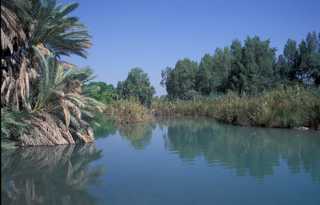 Staggering Food Waste Places Water and Land Resources in Distress, Says SIWI, FAO, and IWMI
Staggering Food Waste Places Water and Land Resources in Distress, Says SIWI, FAO, and IWMI
Report “Saving Water: From Field to Fork – Curbing Losses in the Food Chain” launched at CSD-16
As governments struggle with a sudden crisis in the price of food, a companion crisis in availability of water also threatens billions of people. To meet the challenge of feeding growing populations and the global hungry, massive reductions in the amount of food wasted after production are needed. The Stockholm International Water Institute (SIWI), the Food and Agriculture Organization of the United Nations (FAO) and the International Water Management Institute (IWMI) will call on governments to reduce by half, by 2025, the amount of food that is wasted after it is grown.
The report “Saving Water: From Field to Fork – Curbing Losses and Wastage in the Food Chain,” will be launched on Wednesday, May 14th 2008 at the 16th Session of the United Nations Commission on Sustainable Development and outlines concrete steps to achieve a 50 percent wasted food reduction.
Tossed Food: Like Leaving the Tap Running
Tremendous quantities of food are discarded in processing, transport, supermarkets and people’s kitchens. This wasted food is also wasted water. In the US, for instance, as much as 30 percent of food, worth some USD 48.3 billion, is thrown away each year. That’s like leaving the tap running and pouring 40 trillion litres of water into the garbage can - enough water to meet the household needs of 500 million people. Through international trade, savings in one country might benefit communities in other parts of the world.
More than enough food is produced to feed a healthy global population. Distribution and access to food is a problem – many are hungry, while at the same time many over-eat. The Report highlights an often overlooked problem: we are providing food to take care of not only our necessary consumption but also our wasteful habits.
“As much as half of the water used to grow food globally may be lost or wasted,” says Dr. David Molden, Director of Research at IWMI. “Curbing these losses and improving water productivity provides win-win opportunities for farmers, business, ecosystems, and the global hungry. An effective water-saving strategy will first require that minimising food wastage is placed firmly on the political agenda.”
Food production is constrained by the availability of water and land resources. An estimated 1.2 billion people already live in areas where there is not enough water to meet demand. And with rising demand for water-intensive agricultural products, such as beef and bioenergy, pressure mounts. According to the Comprehensive Assessment of Water Management in Agriculture 2007, these trends will lead to crises in many parts of the world, particularly South Asia and Sub-Saharan Africa. “Unless we change our practices, water will be a key constraint to food production in the future,” said Dr. Pasquale Steduto of FAO.
Saving Water from ‘Field to Fork’
Water losses accumulate as food is wasted before and after it reaches the consumer. In poorer countries, a majority of uneaten food is lost before it has a chance to be consumed. Depending on the crop, an estimated 15-35 percent of food may be lost in the field. Another 10-15 percent is discarded during processing, transport and storage. In richer countries, production is more efficient but waste is greater: people toss the food they buy and all the resources used to grow, ship, and produce the food along with it.
The Report stresses that the magnitude of current food losses presents both challenges and opportunities. “Improving water productivity and reducing the quantity of food that is wasted can enable us to provide a better diet for the poor and enough food for growing populations,” says Prof. Jan Lundqvist of SIWI. “Reaching the target we propose, a 50 percent reduction of losses and wastage in the production and consumption chain, is a necessary and achievable goal.” The Report outlines a number of attainable steps, such as supporting farmers with improved harvesting and food storage facilities; benchmarking standards for businesses to minimise waste in processing and transport; and educating consumers on the impacts of over-eating and food waste on water resources.
A draft of the Report will be made available at www.siwi.org on May 14, 2008.
| Contact information |
Josh Paglia, Communication Officer, Stockholm International Water Institute, 33 Drottninggatan, SE 111 51, Stockholm, Sweden
(email: josh.paglia@siwi.org) Phone: +46 8522 139 96 |
|---|---|
| News type | Inbrief |
| File link |
http://www.siwi.org |
| Source of information | SIW |
| Subject(s) | AGRICULTURE , DRINKING WATER , POLICY-WATER POLICY AND WATER MANAGEMENT , WATER DEMAND |
| Geographical coverage | International |
| News date | 15/05/2008 |
| Working language(s) | ENGLISH |
 you are not logged in
you are not logged in





